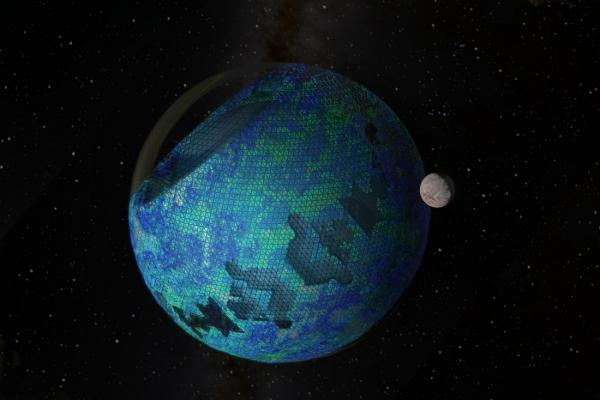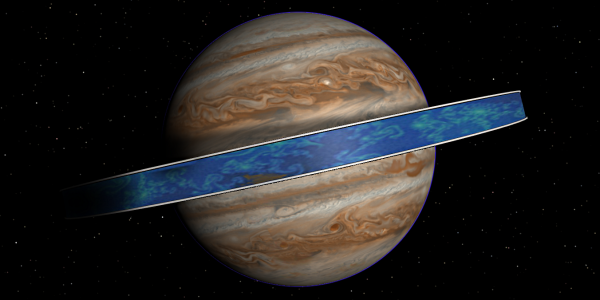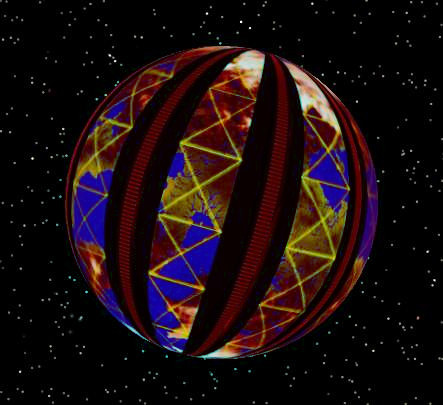BY LETTER
Supramundane and Suprastellar Worlds
Technology > Application > Infrastructure
Technology > Application > Megascale Engineering
Technology > Technology Levels > Ultratech
Technology > Application > Megascale Engineering
Technology > Technology Levels > Ultratech
Shells suspended above planets or stars using mass-stream technology | |
 Image from Copyright Lilly Harper | |
| A Supramundane ring constructed around the gas giant Ryker Survey 1 | |
As part of a general discussion on terraforming projects in the Sol System the gas giant Jupiter was examined by Birch. Birch knew that Jupiter's surface (if you could call it a 'surface') gravity was far too high for habitation by humans. So he proposed creating a new surface above Jupiter at 100,000 km from Jupiter's center of mass, where gravity is felt at Earth standard. This surface would be suspended using so-called Mass Stream Technology.
Mass Stream Technology uses mass particle beams which encircle the planet or star to support structures above it; by exerting thrust magnetically against these beams (known as dynamic orbital rings), suborbital structures can be suspended at any height. Dynamic compression members and dynamic orbital rings using mass stream technology would be configured into a framework around the planet which would support platforms, which could in turn support a large biosphere. Individual platforms could then be extended into bands which could later be widened into a complete shell.
 Image from Steve Bowers | |
| Athelan, a suprashell erected around the gas giant Uranus in the Old Solar System | |
Although Supra-Jupiter would remain only a proposal, other supramundane planets would be built in the millennia to come. As Birch pointed out a supramundane planet could be built around any heavenly body, however if a standard gravity was required on the shell then the underbody needed to have greater than standard gravity at its surface, also if the underbody in question is hotter than a small red dwarf star then active cooling systems will be needed.
Suprastellar shells, dynamically supported shells around stars, invariably use power-collection equipment on the inner surface, and are therefore counted among the many classes of Dyson Swarm or Dyson Sphere that have been constructed in the Terragen Sphere.
 Image from Steve Bowers | |
| A suprajovian ring suspended above the gas giant Mungo | |
 Image from Steve Bowers | |
| A Dreamsphere, a suprastellar shell completely surrounding a brown dwarf in the Stellar Umma region | |
Related Articles
Appears in Topics
Development Notes
Text by AI Vin
Initially published on 16 September 2004.
Initially published on 16 September 2004.
Additional Information
The Supramundane concept (and many other useful ideas) can be found in the Paul Birch Archive
The Paul Birch Archive ----
Image 'Supramundane' copyright by Lilly Harper used with permission. Please contact her for conditions of re-use at https://beaconsinthedark.wordpress.com/.
The Paul Birch Archive ----
Image 'Supramundane' copyright by Lilly Harper used with permission. Please contact her for conditions of re-use at https://beaconsinthedark.wordpress.com/.






